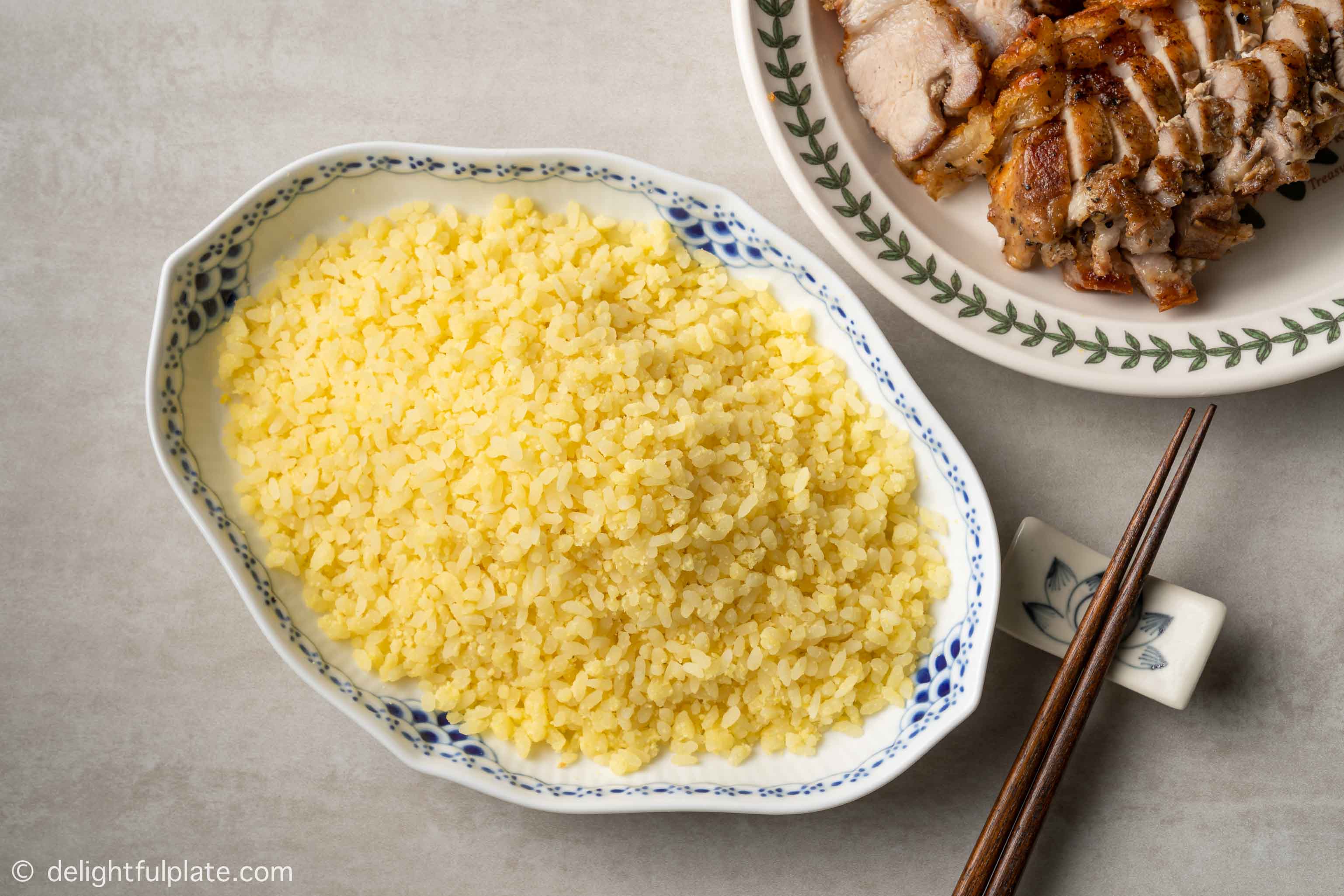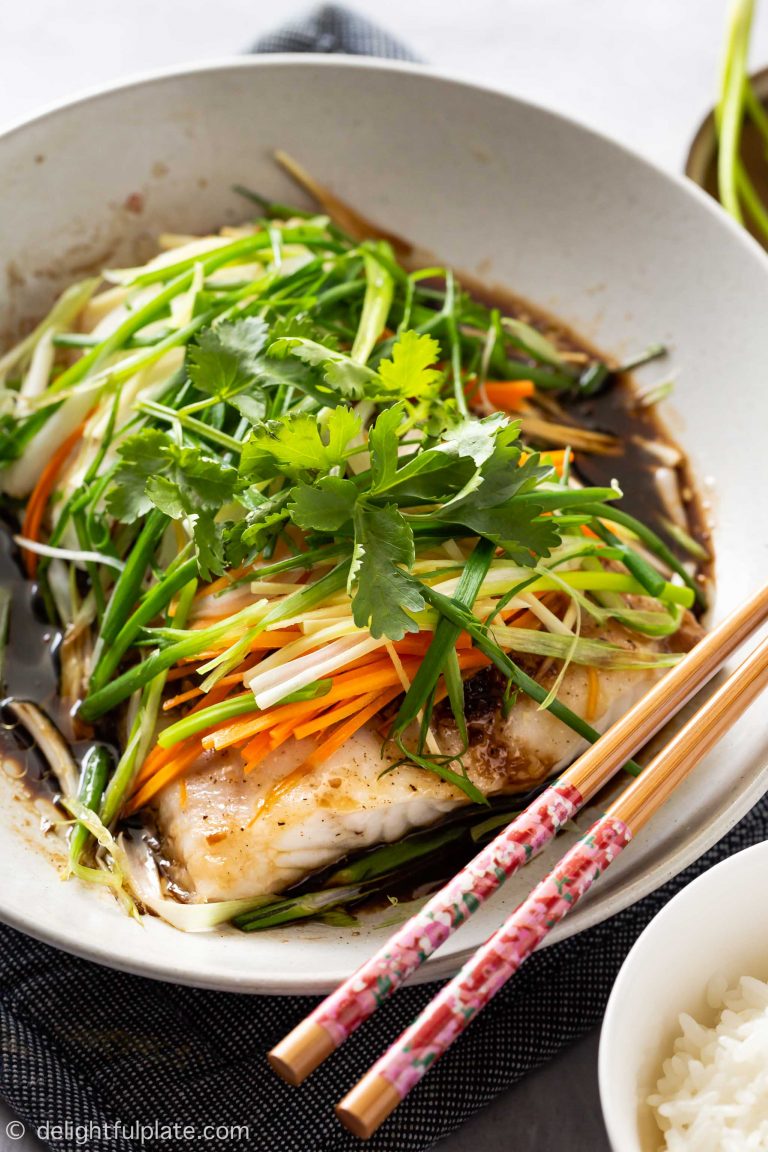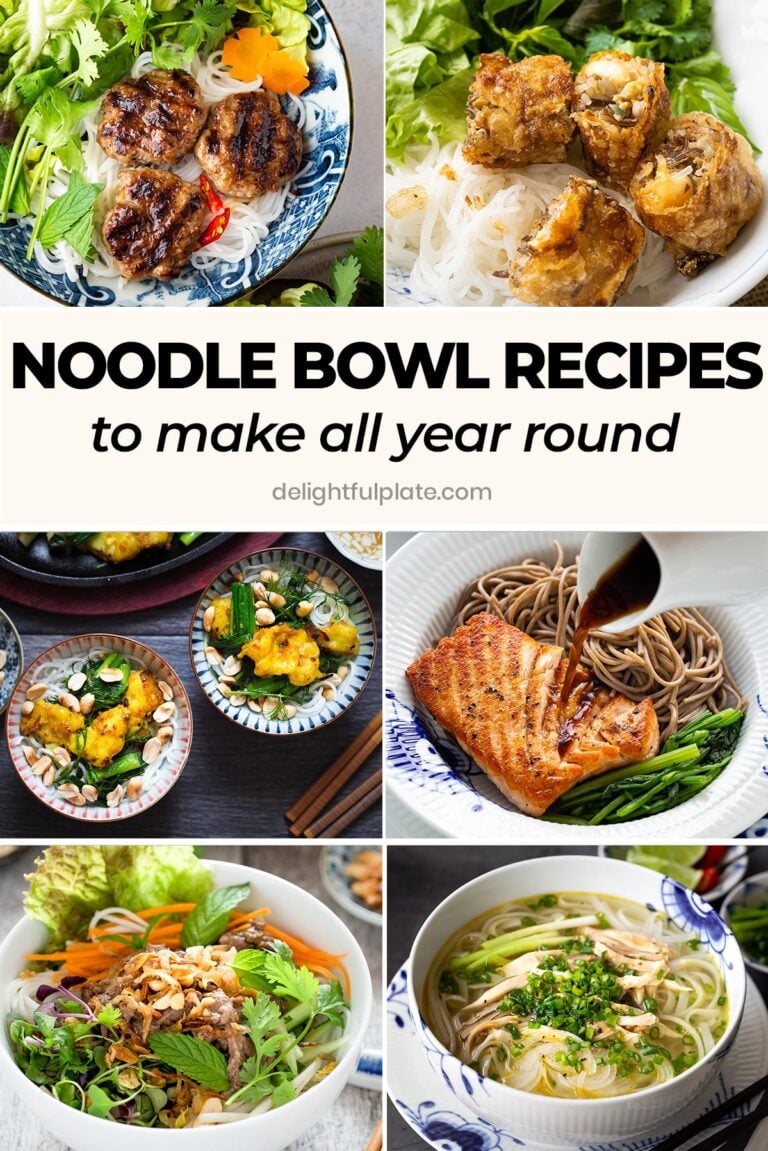Vietnamese Mung Bean Coated Sticky Rice (Xôi Vò)
Xôi Vò (Vietnamese Mung Bean Coated Sticky Rice) is one of the classic dishes of Hanoi. This humble dish is naturally vegan and gluten-free.

A Sticky Rice Dish that Isn’t Sticky
Xôi vò is soft-chewy golden sticky rice which is coated with mung bean that has been steamed and processed into meal. Xôi means sticky rice, and vò implies the action of rubbing the rice with the mung bean powder. This mung bean coating gives the sticky rice hearty and wholesome flavors. We may be a bit biased here since we grew up with xôi vò, but this humble dish is surprisingly tasty and always fills us with nostalgia.
The distinguishing feature of this dish is that once finished, the rice grains will separate from each other. They will not clump like in other sticky rice dishes such as xôi xéo or xôi gấc.

This dish is a classic dish of Hanoi, and other nearby Northern cities also enjoy it. In Saigon, xôi vò is less popular and is adapted to the locals’ taste with the addition of sugar and coconut milk. My recipe is traditional Northern-style xôi vò, which requires just sticky rice and split mung bean (you can buy it at Asian grocery stores or online).
Watch the Recipe Video
Subscribe to our Youtube channel for more easy-to-follow cooking videos!
Equipment
To make this Vietnamese mung bean coated sticky rice, you will need a steamer basket. It is best if you have a bamboo steamer since its lid will not collect water condensation, and as a result, keep the bean and rice fairly dry. In case you can only use a stainless steel steamer, I recommend covering the lid with a kitchen towel to prevent condensation, just like I did in the recipe video.
How to Serve Xôi Vò
Xôi vò is tasty on its own with natural sweetness, heartiness, and richness. Here are some additional ways to serve this mung bean sticky rice in Vietnam:
- Serve it with chè (Vietnamese sweet dessert soups), espcially mung bean pudding. You will often see it served this way in Northern-style traditional banquets, such as Lunar New Year celebration.
- Serve it with savory dishes such as roast chicken, braised pork belly, or roast pork. This way of eating xoi vo is more popular in the South.

⭐️ I’d love to hear what you think about the dish, so please feel free to leave a comment and a rating if you have tried it. New recipes are added every week so let’s connect on Facebook, Youtube, Pinterest and Instagram for the latest updates. You can find my collection of Vietnamese recipes here.

Xôi Vò (Vietnamese Mung Bean Coated Sticky Rice)
Equipment
Ingredients
- 7 oz sticky rice (200g / scant 1 cup)
- 3.5-4 oz split mung beans (100g / scant ½ cup)
- 1/2 teaspoon plus 1/8 teaspoon salt, divided
- 1 tablespoon cooking oil
Instructions
- Rinse sticky rice and then soak in plenty of water for 2-4 hours. Also rinse then soak mung beans in plenty of water for 2-4 hours.
- Drain the mung beans well and toss with ⅛ teaspoon salt. Then steam until they are soft, about 20 minutes. Remove from the steamer basket and let them cool slightly to let excess moisture evaporate.
- Once the mung beans have cooled down, transfer to a food chopper/food processor and grind finely.
- While steaming the mung beans in Step 2, drain the rice very well. You can also use paper towels to absorb excess water. The goal is to dry the rice as much as possible to prevent too much stickiness later. After grinding the mung beans, toss the drained sticky rice with half of the mung bean powder, remaining salt and cooking oil.
- Transfer the sticky rice to the steamer basket and steam until soft, about 25-30 minutes. Then let it cool slightly.
- Toss the steamed sticky rice with the remaining mung bean powder. If you see big clumps, you can use your fingers to separate the grains while rubbing them with the mung bean powder.
- You can enjoy the sticky rice right away on its own, or with Vietnamese sweet dessert soups (such as mung bean pudding), or with roast pork, roast chicken.
Notes
Nutrition












